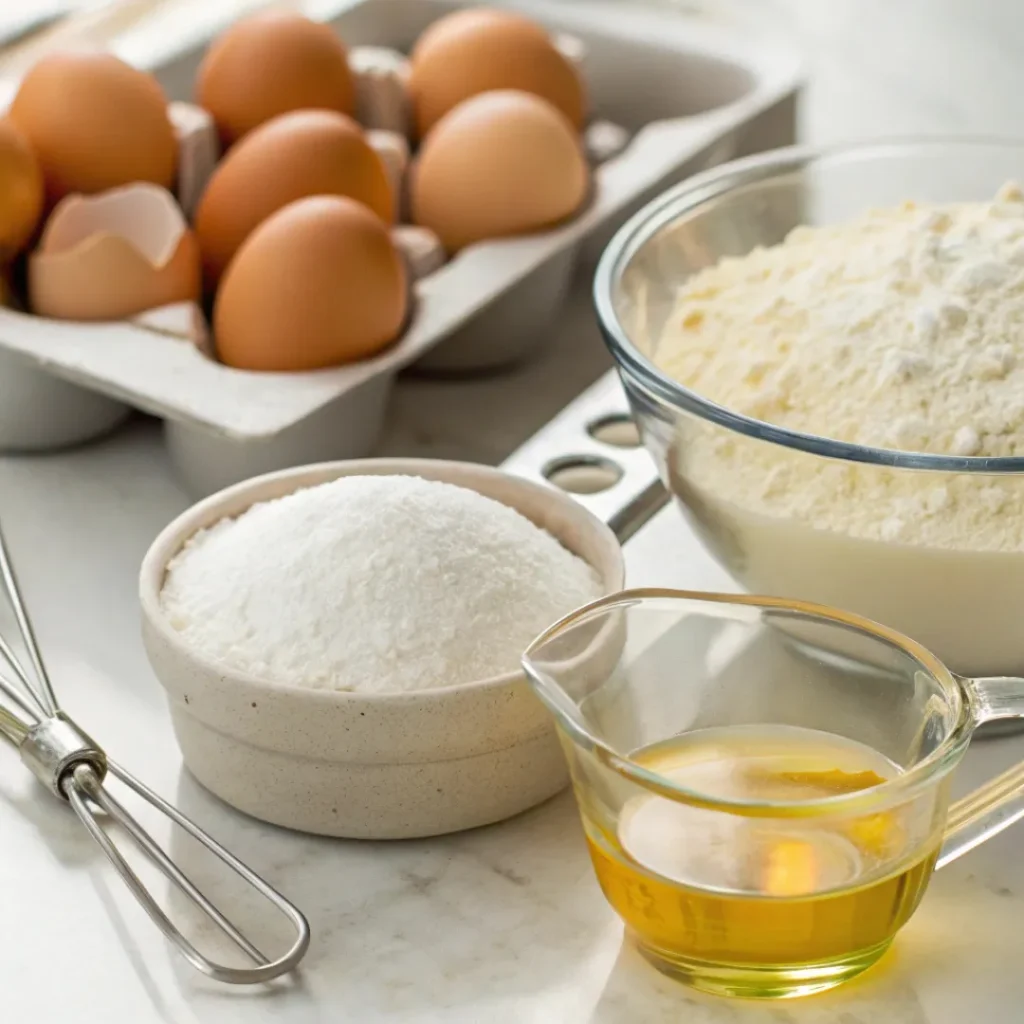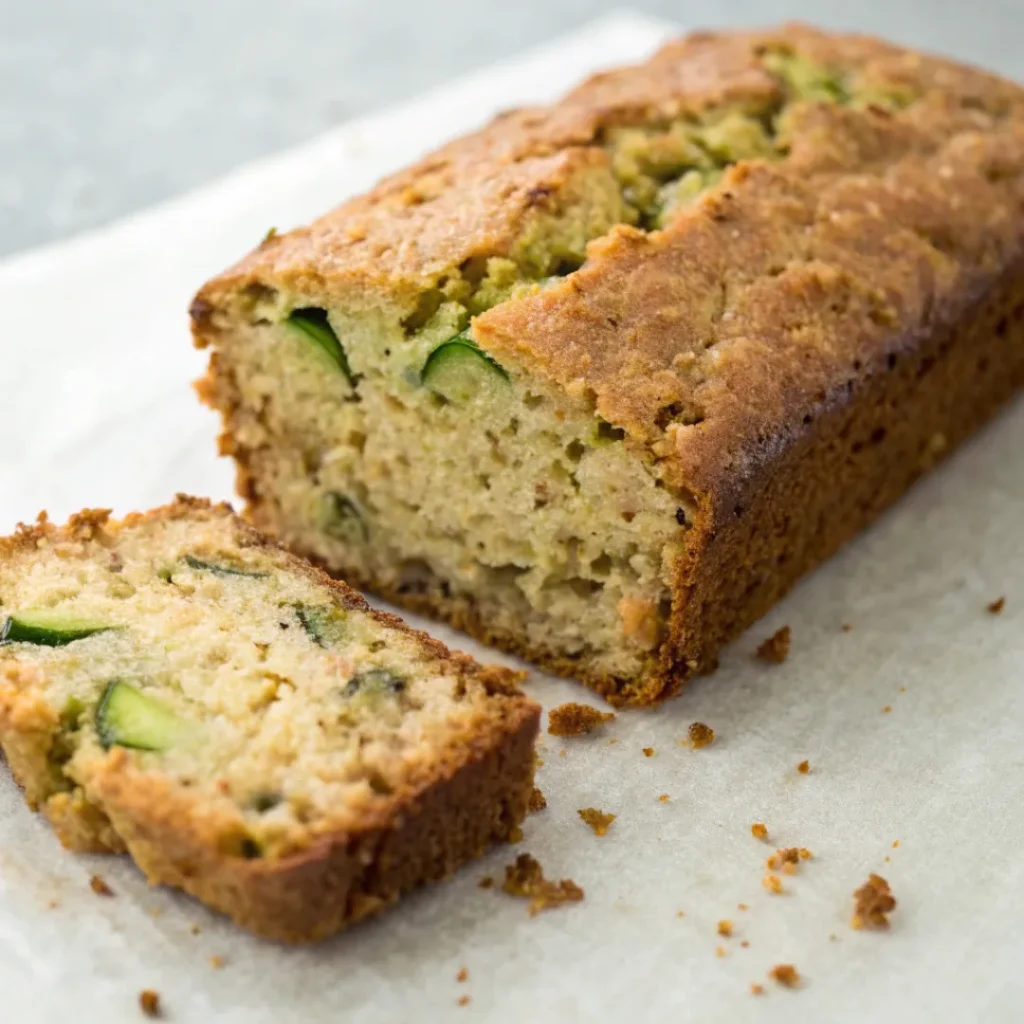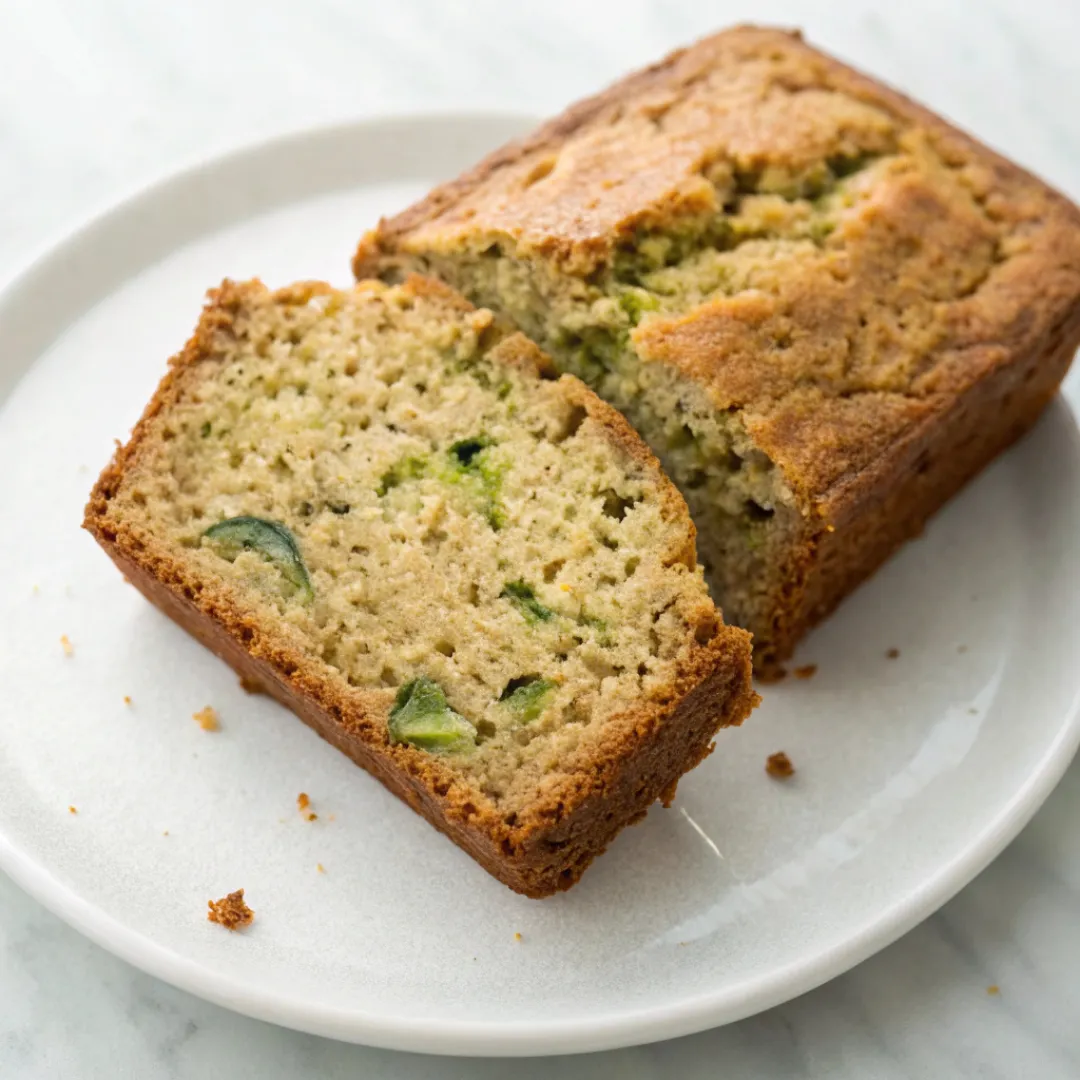Zucchini bread is a delicious quick bread that’s known for its moist and tender texture. However, one common problem that many home bakers encounter is a soggy or undercooked center. If you’ve found yourself wondering, “Why is my zucchini bread soggy in the middle?”, you’re not alone.
This guide will explore the reasons behind a soggy center in zucchini bread, including common baking mistakes, ingredient issues, and tips for achieving the perfect texture. By understanding these factors, you’ll be able to troubleshoot and fix soggy zucchini bread, ensuring your next loaf is perfectly baked.
Common Causes of Soggy Zucchini Bread
Several factors can lead to soggy zucchini bread. Here are some common causes:
Too Much Moisture in the Zucchini
Zucchini has a high water content, which can make the batter excessively wet. If the zucchini isn’t properly prepared, it can release too much water during baking, resulting in a soggy center.
Overly Wet Batter
If the batter is too wet, it may not bake evenly, leaving the center undercooked. This can happen when there’s an imbalance in the flour-to-liquid ratio or when additional wet ingredients like oil or eggs are used in excess.
Incorrect Baking Temperature
Baking zucchini bread at the wrong temperature, especially if it’s too high, can cause the edges to cook faster than the center, leaving the middle soggy. Proper baking time and temperature are crucial to ensure even cooking.
How Ingredients Impact the Texture of Zucchini Bread
The balance of ingredients directly affects zucchini bread’s texture and moisture. Here’s how key ingredients contribute to the outcome:

Flour-to-Liquid Ratios
The ratio of flour to liquid ingredients (like eggs and oil) is crucial. Too little flour or too much liquid can make the batter too wet. Always measure flour using the “spoon and level” method to ensure accuracy.
Proper Leavening Agents
Using the right amount of baking powder or baking soda helps the bread rise properly. Too little leavening can make the bread dense, while too much can cause it to rise and then collapse, leading to an undercooked center.
Oil and Eggs
Oil adds moisture, but too much oil can lead to a greasy, undercooked texture. Eggs provide structure and moisture as well, so maintaining the correct balance between these ingredients is essential for the right consistency.
Baking Techniques to Prevent a Soggy Center
The way you mix and bake zucchini bread also plays a role in achieving the ideal texture. Here are some essential baking techniques:
Avoid Overmixing the Batter
Overmixing can lead to a dense batter, which makes it harder for the center to bake evenly. Stir the batter until ingredients are just combined; a few small lumps are okay.
Correct Oven Temperature and Baking Time
Baking zucchini bread at 350°F (175°C) is generally ideal. This temperature allows the bread to bake evenly without cooking the edges too quickly. Set a timer and check the bread’s doneness around 10 minutes before the suggested baking time to prevent undercooking.
How to Handle Moisture in Zucchini
One of the most common mistakes in zucchini bread is not managing the zucchini’s moisture. Here’s how to handle zucchini properly:
Should You Drain or Squeeze Zucchini?
For most recipes, lightly patting grated zucchini with a paper towel is sufficient. Avoid squeezing out all the water, as the bread may turn out dry. However, if the zucchini is exceptionally watery, gently press it to remove excess moisture.
Preparing Zucchini for Bread
Use medium-sized zucchini, as they’re less watery than large ones. Grate the zucchini finely so it blends smoothly into the batter and doesn’t release too much water while baking.
How to Fix Soggy Zucchini Bread After Baking
If your zucchini bread turns out soggy in the middle even after it’s been baked, there are a few ways to rescue it:

Return to the Oven
If the center is still undercooked, place the loaf back in the oven at 300°F (150°C) for 10-15 minutes. Cover the top with foil to prevent the crust from over-browning and bake until the center sets completely.
Slice and Reheat
For individual slices, you can reheat them in a toaster oven or conventional oven at a low temperature. This won’t fix the entire loaf, but it can improve the texture of each slice.
For more detailed tips on handling undercooked zucchini bread, check out this helpful guide from Miss Vickie on how to fix undercooked zucchini bread.
Preventing Soggy Zucchini Bread in Future Batches
To achieve moist zucchini bread every time, consider these tips to keep your bread soft, tender, and flavorful:
Choose the Right Zucchini
Opt for medium-sized zucchini when making bread, as it has the perfect balance of moisture. Larger zucchinis can be overly watery, which may affect the bread’s texture, while smaller ones might not add enough moisture. Medium zucchini will provide just the right amount to keep your bread moist without being too soggy.
Use Moisture-Enhancing Ingredients
Adding ingredients like applesauce or Greek yogurt can help retain moisture in your bread. Replace part of the oil in your recipe with applesauce or Greek yogurt; both options add moisture while also slightly reducing the fat content. These ingredients blend well with zucchini bread, enhancing texture without significantly altering the flavor.
Measure Ingredients Accurately
Be precise with dry ingredients, especially flour, as using too much can lead to dry bread. Use the “spoon and level” method for measuring flour, where you lightly spoon flour into the measuring cup and level it off. This method prevents packing, which can lead to adding more flour than intended.
Store Properly
Proper storage is essential for maintaining moisture. Once your zucchini bread has cooled completely, wrap it tightly in plastic wrap or place it in an airtight container. For added freshness, store it in the refrigerator if you plan to keep it for more than a couple of days. Well-wrapped zucchini bread will retain moisture and stay soft for longer.
Consider Adding Extra Mix-Ins
Adding mix-ins like chocolate chips, nuts, or dried fruits can help add moisture pockets throughout the bread. These additions not only enhance the flavor but also contribute to the texture, making each bite rich and satisfying.
By following these tips, you’ll consistently achieve zucchini bread that’s moist, tender, and delicious in every batch.
Frequently Asked Questions
Can I use less zucchini to reduce moisture?
Yes, you can reduce the zucchini slightly, but it may affect the overall texture. It’s best to handle the moisture correctly rather than reducing the quantity.
How can I tell if zucchini bread is fully baked?
Insert a toothpick into the center of the loaf. If it comes out clean or with a few crumbs, the bread is ready. If it has wet batter, continue baking.
Should I use all-purpose or whole wheat flour?
Either works, but whole wheat flour absorbs more moisture, which may help with overly wet batter.
Can I bake zucchini bread in smaller pans?
Yes, using smaller pans can help bake the bread more evenly. Adjust baking time if you choose this option.
Conclusion
If you’ve been asking, “Why is my zucchini bread soggy in the middle?”, the answer typically lies in handling the zucchini, balancing ingredients, or adjusting baking time. By understanding these factors and following recommended techniques, you can troubleshoot and prevent soggy bread, ensuring that each slice is perfectly moist and fully baked.
Whether you’re new to baking zucchini bread or looking to refine your technique, these tips and solutions will help you achieve a consistent, delicious result every time. Enjoy baking and experimenting with your perfect zucchini bread recipe!

